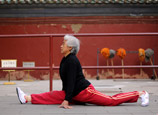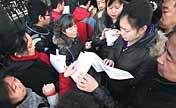
Chinese cities should pay more attention to the quality rather than the rate of their urbanization so as to boost the country's balanced development, said a report released by a think tank Tuesday.
The report, co-released by the Chinese Academy of Social Sciences (CASS) and Beijing-based China Economic Weekly magazine, emphasizes three aspects of evaluation standards - the quality of urban development, efficiency of urbanization, and urban-rural coordination - which are given different weightings in calculating the urbanization quality indexes for 286 Chinese cities.
The higher the index, the better the urbanization quality, according to the report. Sub-indicators include positive factors such as per capita GDP, per capita disposable income and per capita financial expenditure on education. Negative factors include the amount of sulfur dioxide emitted per unit of GDP and the income gap between urban and rural residents.
The report said that Shenzhen, Beijing and Shanghai have taken the lead so far. Coastal cities have obviously better urbanization quality than those in central and western regions, and cities with a larger scale tend to have better quality.
However, cities with faster urbanization rates do not necessarily have higher urbanization quality, the report said. For example, Yichun in Northeast China's Heilongjiang Province ranks 16th in terms of urbanization rate, but ranks 243rd in terms of quality, the report said.
China's urbanization lacks quality, and it is important for it to be enhanced, Wei Houkai, team leader in writing the report and deputy director of the Institute for Urban and Environmental Studies with the CASS, told the Global Times Tuesday.
"In particular, the focus has been on per capita measurements rather than economic aggregate in previous studies, which always listed Beijing and Shanghai with their high GDP and revenue as the top urbanized cities," Wei said.
Karamay in Northwest China's Xinjiang Uyghur Autonomous Region ranks fourth on the list, because of high per capita disposable income, per capita GDP and per capita expenditure on public services, Wei explained.
The 18th National Congress of the Communist Party of China called for the country to "noticeably enhance urbanization quality," since when most provinces and municipalities have set targets for urbanization.
South China's Guangdong Province said Monday that it plans to raise its urbanization rate by 0.8 percentage points each year to 70 percent by 2015.
"However, the difficulty of urbanization is in turning farmers into urban citizens, by reforming the household registration system, and ensuring the same treatment in basic public services and social security for migrant workers and urban residents," Wei said.
China's urbanization rate is expected to reach 68 percent by 2030, which will involve turning 380 million farmers into urban citizens by then, Wei said.
The city ranked lowest is Ulanqab in North China's Inner Mongolia Autonomous Region, an area rich in resources such as coal, according to the report.
















 Year's first rainfall for Beijing
Year's first rainfall for Beijing


![]()
